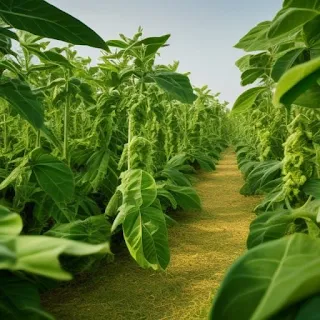Anthony Johnson: From Angolan Indentured Servant to Virginia Planter Class
Anthony Johnson's journey from an Angolan indentured servant to a Virginia planter-class tobacco farmer is a complex and intricate tale of events.
Anthony Johnson, a Black man who lived in colonial Virginia from 1621 to 1675, accomplished a remarkable feat by attaining his freedom and joining the planter class in Virginia. This ascent brought him wealth, power, and social status, but it came at the cost of another Black man, John Casor, whom the Virginia Supreme Court ruled in 1655 would be a slave for life.
The relationship between Anthony Johnson, a Black man, and slavery in colonial Virginia was complex, as Johnson saw it as a means of gaining wealth and social status within society.
Johnson was born in Angola in the early 17th century and was sold into slavery at the age of 21. The Portuguese established a colony in Angola in the early 17th century, which increased their access to slaves from the region. It is likely that Anthony Johnson was one of many captives from Angola brought to Virginia on a Portuguese or Dutch slave ship in 1621. Anthony Johnson was an indentured servant and possibly a member of the Kingdom of Ndongo.

John Casor.
The Kingdom of Ndongo was a wealthy and prosperous kingdom, with a sophisticated political system, a well-organized army, and a thriving economy based on agriculture, trade, and mining. The kingdom's wealth and strategic location made it a target for European powers seeking to expand their empires in Africa. Ndongo initially resisted Portuguese attempts to establish trade relations, but in the late 16th century, the Portuguese launched a series of military campaigns against the kingdom, ultimately conquering it and establishing a colonial presence in the region.
The majority of indentured servants and enslaved Africans brought to Virginia during this time were from Angola and the Kingdom of Ndongo. They were typically sold to wealthy planters who needed labor for their tobacco plantations. Virginia was one of the first British colonies to establish a large-scale plantation economy, and tobacco quickly became a major cash crop. The demand for labor to work on these plantations was initially met by indentured servants, but as the supply of European laborers dwindled, planters turned to the slave trade to meet their needs.
As an indentured servant, Johnson was valuable as men from the Ndongo Kingdom of Angola were highly regarded for their agricultural skills. Most men in Ndongo were involved in cultivating yams, cassava, and maize.
After working on a tobacco plantation owned by Edward Bennett, Johnson earned his freedom in 1640 and eventually became a successful tobacco farmer. He also had some legal rights that many Blacks did not have, such as the right to own property because he was a freed Black man. Despite this, Johnson's status as a landowner was unusual and often contested by white colonists who claimed he was not entitled to own land or hold indentured servants.
Planter class and social power in colonial Virginia
In colonial Virginia, the planter class was a small but powerful group of wealthy landowners who dominated the economy and politics of the colony. Planters were typically white men who owned large plantations and controlled the production of tobacco, the colony's most important cash crop.
Being a member of the planter class conferred significant economic and political power. Planters accumulated vast wealth through the labor of enslaved Africans and indentured servants, and they used their wealth to influence colonial government policies. They also held significant social status, living in fine homes, hosting lavish events, and reinforcing their prestige through slave ownership — a sign of wealth and dominance in colonial Virginia.

Working on a tobacco plantation.
John Casor, made a slave for life by a 1655 court ruling
John Casor was an indentured servant owned by Anthony Johnson who sued Johnson for his freedom after running away to Maryland. Johnson contested Casor's claim, but in 1655 a Virginia court ruled that Casor was Johnson's property and could be held as a slave for life. This case became one of the earliest legal precedents for lifelong slavery in Virginia.
The irony is that Johnson, once enslaved himself, argued for Casor’s permanent enslavement. This ruling helped establish the legal groundwork for race-based slavery in America.
Johnson likely viewed slaveholding as a natural part of wealth-building in Virginia’s society, using enslaved labor to secure economic stability and power.

Tobacco plantation.
By the mid-17th century, several thousand free Black people lived in Virginia, and a few — like Johnson — managed to enter the planter class. His story shows how race, class, and power intertwined as slavery hardened into a permanent system.
Frequently Asked Questions about Anthony Johnson and Slavery in Colonial Virginia
Who was Anthony Johnson in colonial Virginia?
Anthony Johnson was an Angolan man brought to Virginia as an indentured servant in 1621. After earning his freedom, he became a wealthy tobacco planter and joined Virginia’s planter class.
What role did Anthony Johnson play in the John Casor slavery case?
In 1655, a Virginia court ruled that John Casor, another Black man, must serve Anthony Johnson for life. This was one of the first legal decisions establishing lifelong slavery in colonial America.
How did Anthony Johnson gain wealth and social status?
After freedom, Johnson acquired land and farmed tobacco. He used indentured labor and later enslaved people, including John Casor, to expand his plantation and gain economic power.
Why is Anthony Johnson’s story important to American slavery history?
Johnson’s life shows the shift from indentured servitude to race-based slavery. The John Casor case set legal precedent for permanent slavery in America.
Where did Anthony Johnson come from?
Anthony Johnson was born in Angola, likely in the Kingdom of Ndongo. He was captured during Portuguese expansion and transported through the Atlantic slave trade.
More links to articles you will find thought-provoking:
